Plas yn Rhiw: An intoxicating Welsh garden that time forgot
Non Morris visited one of the most beautiful gardens in Wales, and came away utterly smitten.
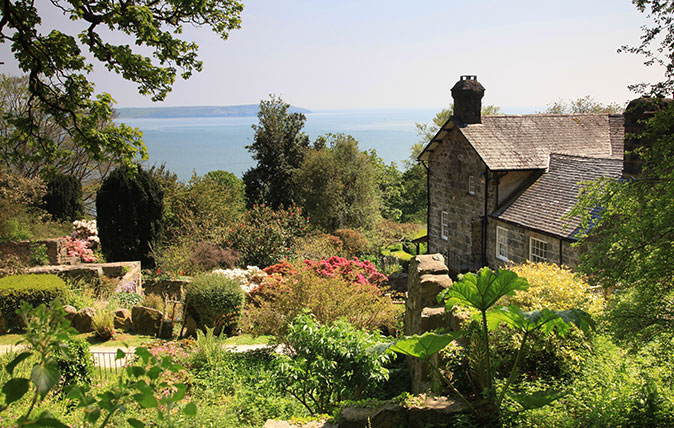

Built onto a hillside ledge, entirely surrounded by woodland at the end of the Llyn Peninsula, the arm that reaches out of North Wales into the Irish Sea, Plas yn Rhiw is a small, 17th-century stone manor house owned and run by the National Trust.
When I arrived last evening, the sun was radiant, but the garden had just closed; today, the morning is heavy with an almost tropical grey sky and the lushness of the ferns in the surrounding woodland is exciting.
I’ve never seen hart’s-tongue fern with such long, exuberant fingers. Against the house entrance, sheaves of crocosmia glow neon-orange in the 11am gloom.
In 1816, the house was elegantly modernised. French windows were cut into its sturdy walls and a slim-limbed Regency verandah was constructed along the façade. By the early 1920s, it had been abandoned and left to decay.
The rarity of this ‘ancient manor house’ and the exquisite nature of its position was championed by the architect Clough Williams-Ellis, whose Italianate village, Portmeirion, sits 30 miles away along the same coast.
‘On a haphazard ramble I found myself within striking distance of a place I had heard about. It was a complete wilderness with sapling trees thrusting up through the slabs and ivy entering through the windows,’ he wrote.
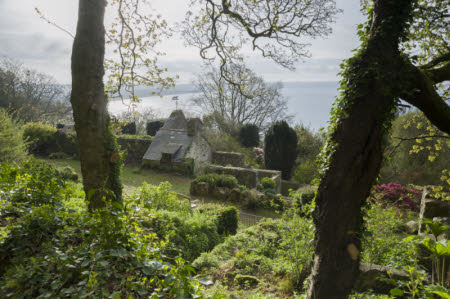
The romance intensifies in a letter he wrote 20 years later, recalling the view through to Cardigan Bay, almost hidden by the ‘fuchsias, figs, rhododendrons and azaleas that here flourish so famously’ and the house ‘buried in a blossoming jungle’.
Sign up for the Country Life Newsletter
Exquisite houses, the beauty of Nature, and how to get the most from your life, straight to your inbox.
Williams-Ellis felt something must be done to save it. ‘At the time a cousin of mine was vaguely hunting for something sufficiently remote and beautiful. I thought it would be just the thing, and so did he.’
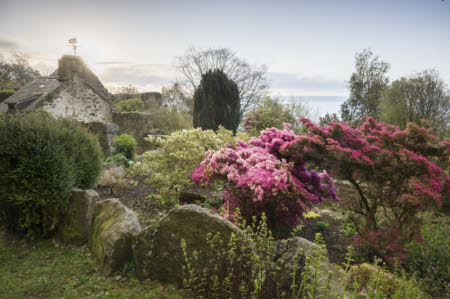
However, in the end, three feisty sisters from Nottingham, Eileen, Lorna and Honora Keating – regular holidaymakers on the peninsula – bought the house and a reduced estate of 58 acres nearly two decades later, in 1939.
There are stories of the garden being so overgrown that the women had to clamber in through a first-floor window to view the house. Once it was theirs, they set about restoring the building with advice from Williams-Ellis, while creating a wonderfully deft and welcoming garden.
With inspired tenacity, they purposefully bought up every available parcel of land until they’d restored the estate to some 400 acres, whereupon they donated the land and then the house to the National Trust.
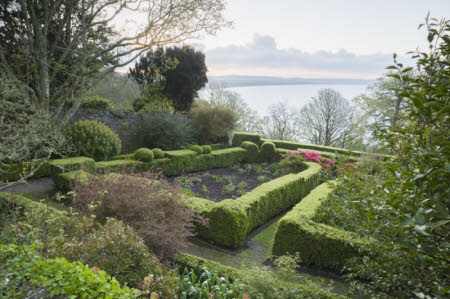
Inside, among a covetable collection of Welsh oak furniture, it looks as if the sisters have just popped out. A fur jacket hangs behind a door, a bottle of lavender scent sits on the dressing table and there’s a small but serious office where business was clearly thoroughly attended to.
Outside, some of the early-19th-century outbuildings were restored, but, with almost visionary grace, the sisters left a number as ruins to be enjoyed for the contrast of stone form against living green.
The former dairy and threshing sheds are now romantic archways and rough-hewn walls, brilliantly energised with voluptuous green ferns. The tiny, creeping Soleirolia soleirolii is a delicious, verdant foil for the handsome cobbles of the courtyard floor. As always in this kind of mild, watery, west-coast terrain, I love the way that green starfishes of maidenhair spleenwort dart across the walls.
There is running water, mirrored by prostrate rosemary flowing almost endlessly to the ground and everywhere so much luxuriant green.
Dynamic, fern-lined alleyways make way for bulging corridors of contented green box. At the sloping front of the garden, a cheerily uneven box parterre holds fiery red crocosmia and steely acanthus against the milky-grey sky and matching sea.
The entire garden is framed by towering, lushly growing specimens of magnolia and bay among other slightly unlikely species, many of them donated to the Keating sisters by other National Trust gardens to get things started.
I am smitten by the spirit and atmosphere of Plas yn Rhiw. Is it still possible, anywhere, to set off on a ‘haphazard ramble’ and uncover ‘something sufficiently remote and beautiful’?
Non Morris is a garden designer
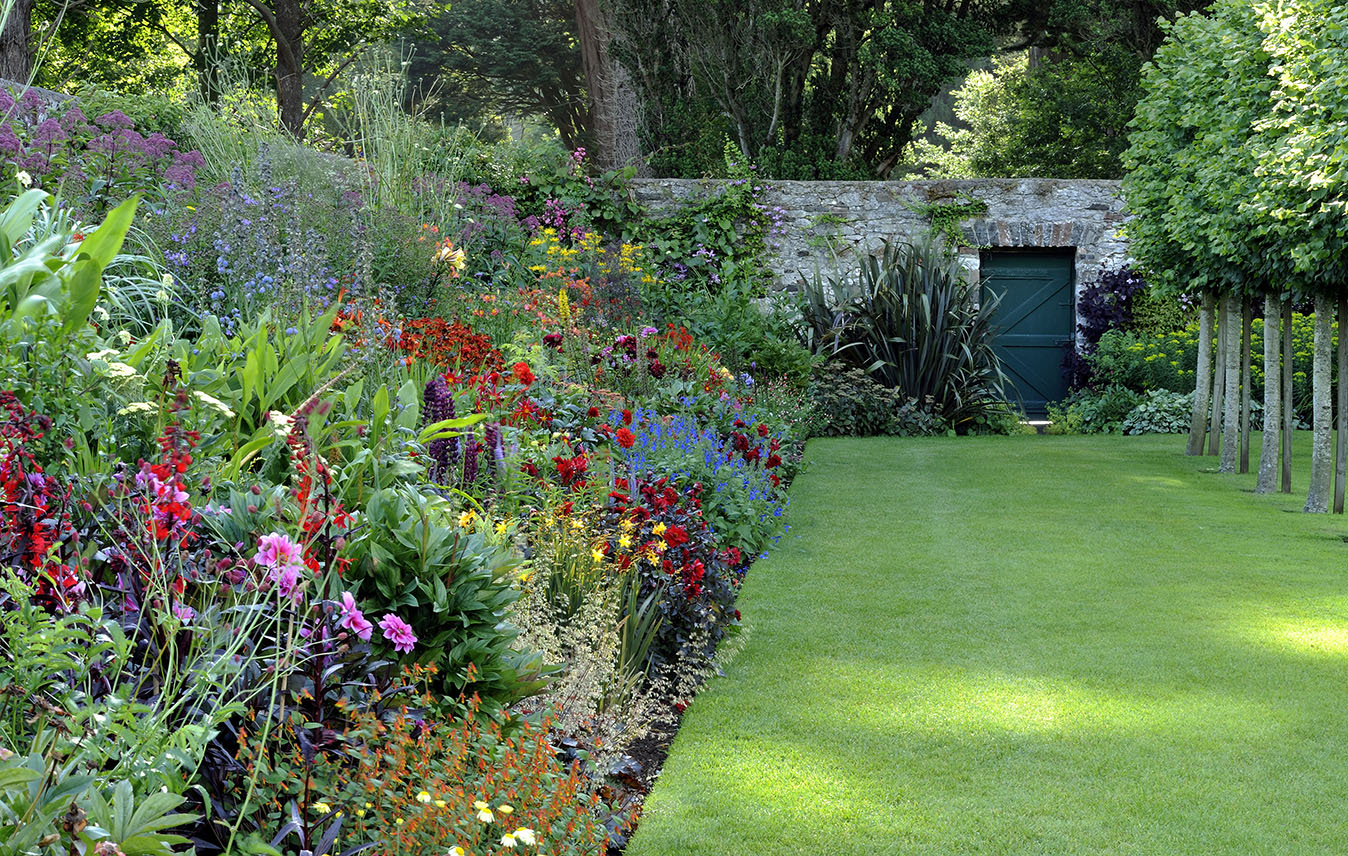
The walled garden at Glenarm Castle, full of surprising, exhilarating and fiery colours
Glenarm Castle's walled garden is a testament to the endless nurturing enthusiasm and creativity of those who care for it,
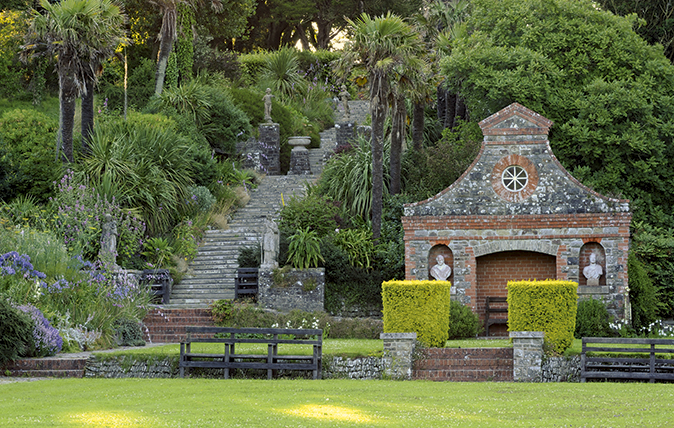
Tapeley Park: A Devonshire garden filled with dramatic flourishes at every turn
Non Morris discovers that experimentation, environmentalism and numerous dramatic flourishes invigorate this unusual Devonshire garden at every turn.
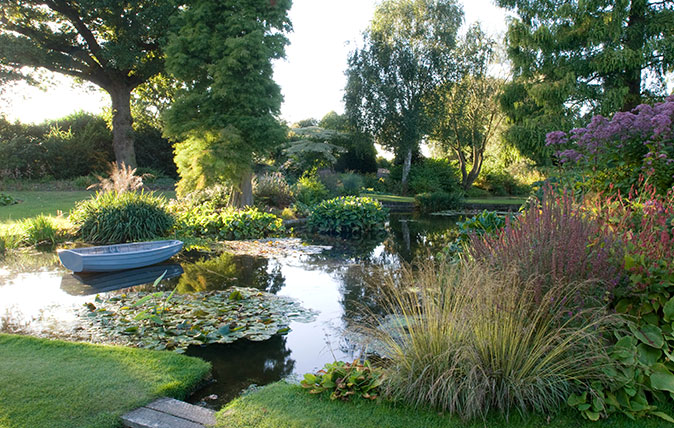
Alan Titchmarsh: How to keep a perfect pond
Alan Titchmarsh says that now is the time to clear out the weeds and keep your pond in top condition
-
 Two quick and easy seasonal asparagus recipes to try this Easter Weekend
Two quick and easy seasonal asparagus recipes to try this Easter WeekendAsparagus has royal roots — it was once a favourite of Madame de Pompadour.
By Melanie Johnson
-
 Sip tea and laugh at your neighbours in this seaside Norfolk home with a watchtower
Sip tea and laugh at your neighbours in this seaside Norfolk home with a watchtowerOn Cliff Hill in Gorleston, one home is taller than all the others. It could be yours.
By James Fisher